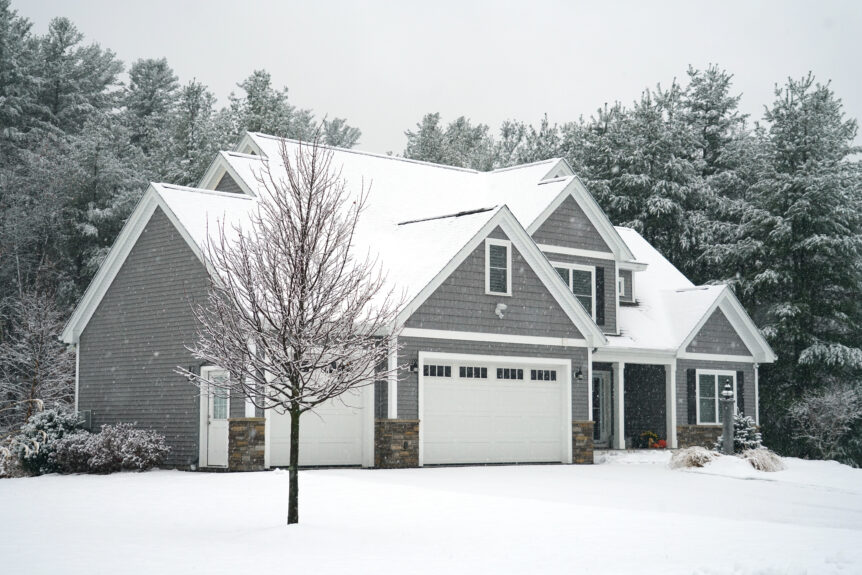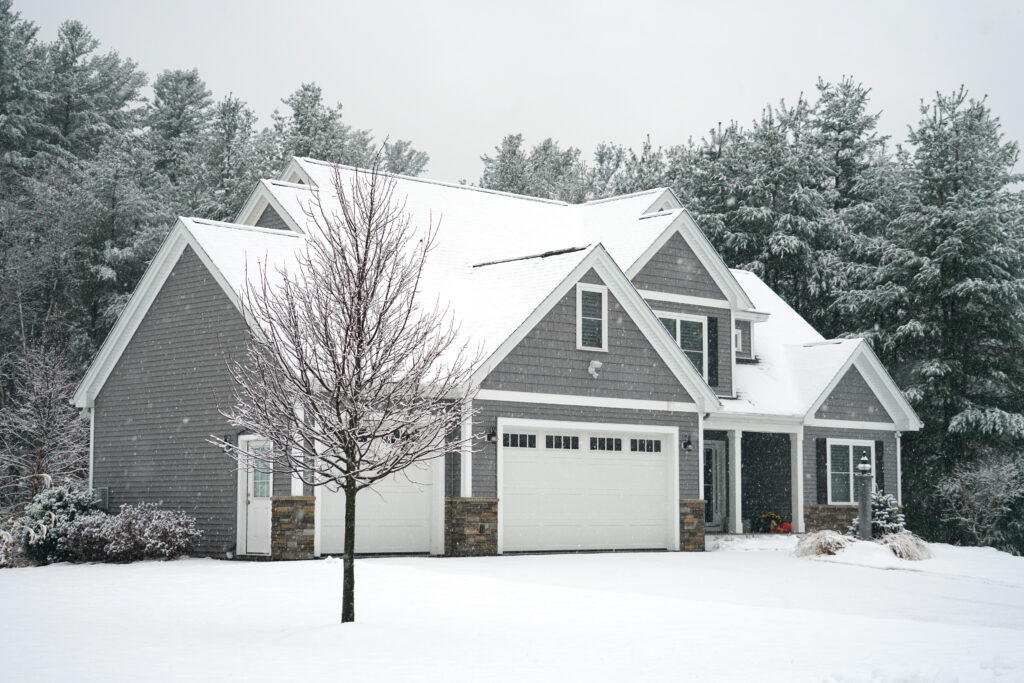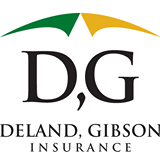As we head into December and temperatures continue to drop, it’s time to gear up your property for winter weather. The Old Farmer’s Almanac predicts the 2023-2024 Winter season to bring “above normal snowfall to snow-prone regions…particularly in the Northeast and Midwest.” This prediction is alarming, given that winter storms led to nearly $6 billion in insured losses in 2022, marking the second-highest year for such losses in the past decade, as reported by Aon.
If you live in a region of the United States that is subject to freezing temperatures during the winter, then you are no doubt aware of some of the risks that come along with winter temperatures. To ensure you’re ready for the upcoming winter, you must take action before it’s too late. In this article, we will go through preventative measures you should take to prepare your home for the season.
Most common winter claims:
Frozen pipes:
When pipes freeze in your home, the pressure of the expanding ice within them can cause the pipe to burst or split. In many cases, this damage is only recognizable after temperatures rise again and the pipes thaw when they unveil the damage and begin to leak or spray. Sometimes, it is a pinhole leak that causes damage over time. Other times, it floods the basement for months until you return from your winter residence or vacation. And, before you dismiss frozen pipes as a low-risk event, consider this: an estimated 250,000 homes fall victim to frozen and/or burst pipes annually in the United States, resulting in billions of dollars of avoidable damage.
Tips to prevent frozen pipes this winter:
- Insulate exposed pipes: Use pipe insulation or heat tape to wrap pipes so they cannot freeze.
- Seal Leaks: Seal any cracks that may let in cold air, such as dryer vents or water pipes.
- Open cabinet doors
- Let water drip from the faucet: Start a drip in the kitchen, bath, laundry areas, and any other faucets to keep water flowing and prevent freezing.
- Keep your home warm: We recommend keeping your thermostat set to at least 55 degrees Fahrenheit during freezing temps.
Snow/ice damage
Heavy snow and ice can cause significant damage to your house. Snow and ice can crush your roof, cause branches to fall, and clog your gutters, creating ice dams.
Poor roof ventilation and a warm attic space are the main causes of ice dams. When snow melts on a warm roof, it creates water that freezes along the gutter’s edge. This then causes water to pool and seep through the roof and into your home, which can cause severe damage to your property.
Follow these tips to prevent snow and ice damage this winter:
- Clean out your gutters – remove sticks, leaves, and other debris before snow starts falling to prevent ice dams from forming.
- Install gutter guards to prevent debris from entering the gutter.
- Get a roof rake to pull snow off the roof.
- Purchase calcium chloride or a similar ice melt product to apply directly on the roof’s edge. You can also buy this in tablet form that you can throw up on the roof, which is a safer option than using a ladder.
- Find a local company that can remove ice dams and shovel your roof if necessary.
- Install a water-repellant membrane underneath the shingles of your food to prevent water from seeping inside.
- Insulate your attic to prevent the melting-and-freezing cycle that leads to ice dams.
- Remove snow from your roof after each storm.
For more information on ice dams, check out our blog post, Tips to Help Remove an Ice Dam from your Roof.
House fires
Fall and winter holidays, such as Thanksgiving, Hannukah, and Christmas, are some of the most common days of the year for house fires to occur, due to cooking, chimneys, decorative lights, and candles.
To avoid house fires this winter, take preventative measures such as these:
- Check that all candles and chimney fires are extinguished before leaving a room.
- Keep flammable items at least three feet away from open flames.
- While cooking, specifically simmering, baking, or roasting, check your food regularly and remain in the kitchen.
- Use the exhaust fan or vent above your stove.
- Check decorative light strings for broken or cracked sockets and frayed wires.
- Be careful not to overload a circuit by plugging too many lights into an outlet – this can lead to electrical fires.
- Have a fire extinguisher on hand.
For more information on chimney fires, check out our Fireplace Safety blog article.
Wind/hail damage
Wind and hail are more intense during the winter months, which can cause damage to your home.
To best prepare for wind and hail damage, follow these tips:
- Remove and store all unsecured outdoor items, such as umbrellas and furniture.
- Make sure your roof is in good condition.
- Consider installing storm shutters if you live in areas prone to hail damage.
- Reinforce doors and windows.
- Trim trees to prevent branches from falling.
Personal injury liability
An icy walkway can lead to liability concerns on your property. If someone were to slip and fall on your property, whether you invited them to your home or not, they could sue you. Falling icicles or tree branches can also pose a threat. To prevent liability concerns, shovel your driveway after a snowstorm and apply salt to make it less slippery. Furthermore, you should ensure you are covered with adequate homeowners’ liability insurance.
The winter can be a risky time for property owners. Make sure you are adequately prepared and covered by insurance. If you have any questions about protecting your home for this winter, call Deland, Gibson at (781) 237-1515.
Providing Peace of Mind Through Proactive Service
Deland, Gibson: a Trusted Choice, Five Star Accredited independent insurance agency. Established in Massachusetts in 1900, Deland, Gibson is a 4th generation family-run insurance agency that has thrived working as a trusted advisor for its client base. We work with individuals and businesses to lower their Total Cost of Risk. We analyze a client’s direct and indirect costs and implement risk reduction plans to address areas of business, hazard, or strategic risk.



